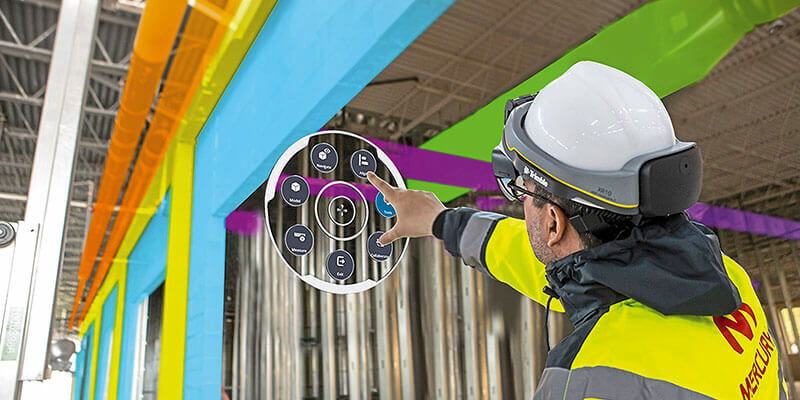Mark Poveda believes it’s time to focus on how the technology is used rather than how it works.

Recently, I’ve been out and about at quite a few conferences including those dedicated to Digital Transformation. It’s been particularly interesting to meet with the delegates and get a good understanding of how they react to the new technology that we present to them in either our roles as manufacturers or distributors.
What’s become very clear is that, while people are interested in topics such as robots, AI and Mixed Reality, these are advances that are best understood with a ‘hands-on’ approach and strong practical examples.
New kid on the block?
For example, Augmented and Mixed Reality might be regarded as ‘the new kid on the block’ within our industry, but a news report as far back as 1997 shows that, for Trimble, this technology had been over 20 years in the making! Development is now continuing apace and, in particular, recent software advances are engaging a wider variety of users.
While the geospatial market for AR/ MR is still relatively small, primary research indicates that the construction market will see a 44% increase in the number of AR devices used in 2023 alone.
Here at KOREC, our experiences, with customers, and from conference feedback, indicate that while initial take up has indeed been slowish, end users love the idea of AR/MR. But it’s only when they adopt it into their workflow that they realise how beneficial it can be to their businesses.
The level of end user satisfaction is a major driver of this growth and recently, following trials on a major project, a government-owned, arm’s-length company polled 15 users for their thought. The result: 71% rated AR (in this case Trimble SiteVision) as 10/10, and 72.9% wanted to use it again.
In the UK, we believe that the adoption of this technology will gather pace and that momentum will be assisted by greater knowledge of its ease of operation and the specific benefits it can deliver. Accordingly, we’re building up a great selection of end user stories and videos. Two examples are cited below.
In conclusion, the pieces of the puzzle are now in place for AR/MR to really take-off and we believe that, with greater exposure to and awareness of the benefits, the technology will change the way we work on sites.
Mercury Engineering adopts MR for a truly collaborative project
Mercury’s project (an enterprise data centre in Europe covering 7,000 sqm facility and constructed over three floors) is truly international. While construction work is taking place in northern Europe, the client is a multinational company, and Mercury’s offices are located in Ireland, in addition, two key members of Mercury’s BIM team are based in two different European locations.
The ability to share site information with these parties, using videos and images generated by the XR10, has been one of the greatest benefits. By far the greatest feature of the XR10 is the ease with which it allows the Mercury surveying engineer to spot any concerns he has with the model and then quickly and clearly communicate them with the remote team members. By using the XR10 generated videos and photographs it is easier to explain a problem and gain a same day response on most issues. Additionally, it would be possible for a remote team to view a live feed via Microsoft Teams and Remote Assist.
FR McCann uses Trimble XR10 and Connect AR for greater field access to 3D models
FP McCann is the UK’s largest manufacturer and supplier of precast concrete solutions for applications such as drainage and water management, tunnels and shafts, rail, power and infrastructure, etc. It uses Trimble Tekla software to create its models.
Connect AR – Before pouring the concrete, FP McCann aligns its model using a QR code to check the reinforcements specified in the Tekla model against the real thing. This is viewed using Connect AR on a Tablet. If the model is not correct, errors can be spotted at this stage and a £2k repour, along with the generated waste, can be avoided.
Trimble XR10 – FP McCann is also using the Trimble XR10 to, again, visualise its Tekla models before concrete is poured.
Mark Poveda is Group Commercial Director of KOREC Group (www.korecgroup.com)


